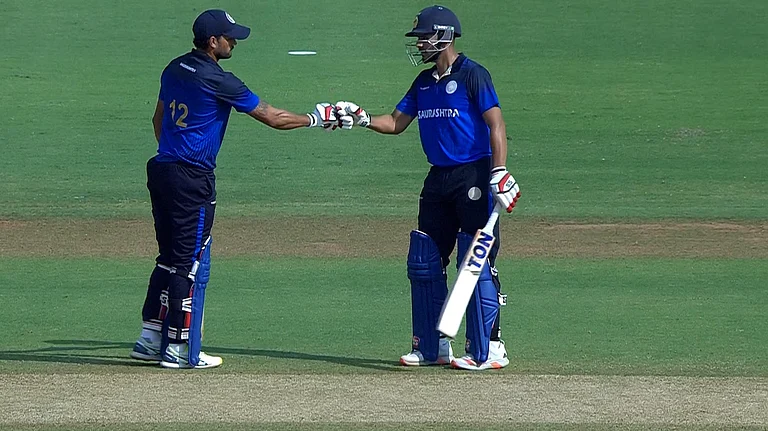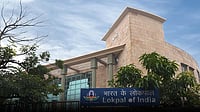The Indian Space Research Organisation (ISRO) on Tuesday said that a 24-hour "launch rehearsal" of the Chandrayaan-3 Moon mission has been concluded.
The Chandrayaan-3 is slated to be launched on Friday. It is a follow-up to previous Chandrayaan-1 and -2 in 2008 and 2019 respectively.
"The ‘Launch Rehearsal’ simulating the entire launch preparation and process lasting 24 hours has been concluded," said ISRO on Twitter.
Chandrayaan-3 launch date, objective
Chandrayaan-3 is slated to be launched on July 14 (Friday) from the Satish Dhawan Space Centre, Sriharikota, Andhra Pradesh.
The Geosynchronous Satellite Launch Vehicle Mark III (LVM-3) will blast off from the Satish Dhawan Space Centre at launch time of 2:35 pm to put Chandrayaan-3 in space.
Chandrayaan-3 is primarily a landing and roving mission. Unlike the partially successful Chandrayaan-2 (2019), there is no orbiter element this time.
The stated mission objectives of Chandrayaan-3 are:
- To demonstrate safe and soft landing on Lunar Surface
- To demonstrate Rover roving on the Moon
- To conduct in-situ scientific experiments
"Chandrayaan-3 consists of an indigenous Lander module (LM), Propulsion module (PM) and a Rover with an objective of developing and demonstrating new technologies required for Inter planetary missions. The Lander will have the capability to soft land at a specified lunar site and deploy the Rover which will carry out in-situ chemical analysis of the lunar surface during the course of its mobility," says ISRO.
The lander and rover of Chandrayaan-3 will conduct experiments for around 15 days, which would be one day on the Moon.
First to land on Moon's South Pole
The Chandrayaan-3 is set to be the first spacecraft on the South Pole of the Moon.
This is a significant first in spacefaring history as the region remains unexplored and, therefore, the first spacecraft there has the potential to gather crucial insights. Moreover, the South Pole of the Moon is also the place where the US Artemis-III spacecraft will land with humans in next few years. It would be the first time that humans would return to the Moon in over five decades.
"The south pole region has very different geology from the region around the [US] Apollo missions, so Chandrayaan-3 will provide a close-up view of an entirely new region of the Moon," said planetary geochemist Marc Norman of the Australian National University in Canberra to Nature.
This will be the first time any tests would be conducted on the South Pole, so data and conclusions drawn are set to be studied keenly across the world.
"Similar measurements were made by the US Apollo and Chinese Chang’e missions when they landed nearer the Moon’s equator, but this will be the first analysis of the environment at one of the poles. Thermal conductivity in particular depends on the grain size and packing of regolith — the surface layer of loose rubble — and so will be useful for characterizing the landing site, Norman says. Such data cannot be obtained from orbit," notes Nature.
Notably, this is India's second mission to South Pole. The Chandrayaan-1 (2008) was intentionally crashed into the South Pole that confirmed the presence of water ice in a major discovery.
Space.com says, "Chandrayaan 1, which launched in October 2008, sent a moon orbiter aloft in India's first-ever deep-space effort. The orbiter carried a 64-pound (29 kilograms) impactor probe that slammed hard (but intentionally) into the lunar surface near the south pole. The impactor detected water ice just before it crashed, a discovery matched by a NASA instrument aboard the Chandrayaan 1 orbiter called the Moon Mineralogy Mapper."
Earlier in 2019, Sudip Bhattacharyya of Tata Institute of Fundamental Research (TIFR) told PTI that South Pole is also crucial from the point of view of finding potential water source on Moon.
He said, "Moon's South Pole region has more shadow than the north pole region, and there are possibly some permanent shadowed region, for example, in the craters, called cold trap. So it is more likely that water, in the form of ice, and some other volatile elements are preserved and will be found in the south pole region."
Bhattacharya also said that the region could also give insights into the early solar system.
He told PTI, "This is important not only for water, but also to study a fossil record of the early solar system, and to understand the linked history of the Earth-Moon system. Chandrayaan-2 lander is supposed to be the first to have a soft landing in this region," Sudip Bhattacharya added.


























